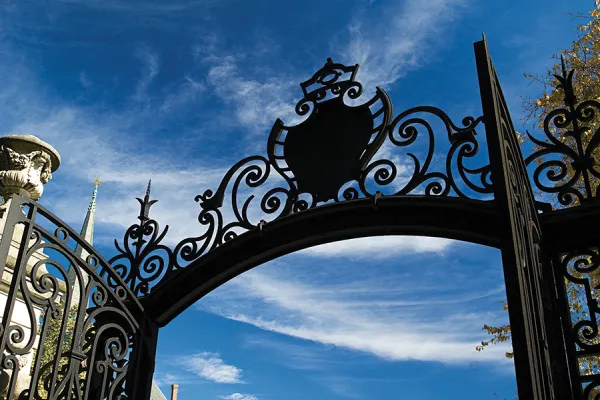A Record-Breaking Admission Season
News of Note
Smith’s newest class was chosen from the largest applicant pool in the college’s history

Published March 28, 2023
Members of the Smith College class of 2027—who began receiving their acceptance letters last week—already have one notable distinction to their credit: They were chosen from the largest and most diverse applicant pool in Smith’s history.
According to Joanna May, vice president for enrollment, Smith received 9,868 applications for the class of 2027, reflecting a 36 percent increase over last year. Also of note: a 51 percent increase in international students, a 43 percent increase in students of color, and a 40 percent bump in students applying from outside of the Northeast and New England regions.
Smith’s admit rate—a measure of the college’s selectivity—dropped to 19 percent, which is down from 23 percent in 2022 and 30 percent in 2021.
“We are thrilled with the diversity of the applicant pool as well as the number of students interested in attending Smith,” May said.
She added, “We were impressed not only with the academic talent and extracurricular passions of the admitted class, but also with each student's distinctive fit with Smith. They showed qualities common in all Smithies—intellectual curiosity, confidence, a commitment to social justice, deep commitment to their communities, broad and inclusive worldviews, and great capacity for leadership.”
Some of the increase in applications can be attributed to factors like reshaping the college’s financial aid program, May said. “Last year, we eliminated loans from financial aid packages and replaced them with grants from the college,” she said. “We are one of a small number of schools who meet students’ full need and do so without loans, and we were the first women’s college to take that step.”
When announcing the no-loans policy last fall, Smith College President Kathleen McCartney noted, “Eliminating loans from financial aid packages will enable Smith to recruit and enroll the best students, regardless of family resources, and enable future alums to begin their careers or continue their studies with their debts greatly reduced or eliminated.”
This was also the first year since the beginning of the COVID-19 pandemic that Office of Admission staff resumed travel within the United States and met with potential applicants and their families in a variety of in-person events and virtual programs, May said. Though international travel has not resumed at pre-pandemic levels, the admission office has increased its virtual outreach to international populations. In addition, Smith joined several new joint travel groups with other colleges, visiting Florida with Bates, Oberlin, Occidental, and Davidson colleges and leading virtual presentations with Brandeis and Boston universities, as well as the University of Vermont and Bates, Spelman and Scripps colleges.
Conversations during on-the-road encounters with prospective students gave admission staff the opportunity to convey more about Smith’s distinctive characteristics, including the open curriculum, the natural beauty of the campus, the new Neilson Library, outstanding research facilities, and Smith’s own origin story as a women’s college. “We have a unique story to tell,” May said.
Likewise, new initiatives and policy changes to make a Smith education more accessible to all eligible students, along with efforts to streamline the application process, resonated with prospective students.
Specifically, Smith eliminated the requirement that students respond to the college’s separate supplemental questions that asked for short essay responses. Applicants are still required to submit one essay through the Common or Coalition Application. To make the financial aid application process more accessible for families, the college eliminated the Smith Application for Financial Aid and now requires only the FAFSA and CSS Profile, which are required by most private colleges.
Smith is looking forward to its new partnership with QuestBridge, a national nonprofit organization that connects high-achieving low-income students to financial aid and scholarships at highly selective colleges, May said. The class of 2028 will include the first group of students admitted through the program.
This year, the college expects to enroll 630 new students. Admitted students have until May 1 to respond to Smith’s offers of admission to the class of 2027. Until then, the admission office hosts on-campus events, inviting accepted students and their families to the college, so they may meet current students, tour the campus, connect with faculty and administrators, and learn about all that Smith has to offer.